Scenario planning for business disruption - what is a black swan event v/s a grey-rhino event? Financial modeling case-study.
I am writing here after a long time but coinciding with an article published on scenario planning recently by FMI.
Also, we recently read about the exploratory and fully-equipped submarine made of carbon fiber named 'Titan' that met the same unfortunate fate as the wreckage it went to explore, that of the 'Titanic'. No one could have seen that coming - it was unimaginable.
Similar 'un-imaginable' situations also confront business operations - at every and any scale of operation.

Though the analogy from Titanic may seem outstretched to a few - however, even before COVID hit everyone, FMCG giant Nestle's hero product in India, Maggi which contributed 75% of its revenue from India was banned. Yes, all of a sudden due to rumors of the presence of some carcinogenic substance in a few samples. It was a Black Swan event that hit Nestle's topline not only in India but across the globe (lookup its annual report for 2015).
Now, this provokes us to ask what is a black swan event? Think about these events...

These are characterized by their rarity in occurrence, extreme impact, and difficulty in prediction merely based on historical data or conventional modeling. It highlights the limitations of relying solely on historical data and linear extrapolation to anticipate rare and unforeseen events.
Can you imagine that a massive solar flare from Sun can disrupt our global communication systems in a single shot? You cannot…no one can...

However, certain 'Gray-rhinos' events are standing some distance apart but may charge toward us anytime. The question is - are we prepared? or how do we prepare for them? Management can, by acting proactively - through scenario planning.

Now, look at these events - we talk and read about them in our daily conversations as well as they are exhaustively covered in every daily newspaper globally.
McKinsey has labeled these events as Grey Rhinos events, the ones that seem relatively probable, have a high impact when they go ka-boom, and carry high-risk perception though without full clarity on their full dimensions. However, these are the events/threats that we can see charging toward us and also acknowledge them but yet do nothing about them.
Let us now don a perspective from a CEO / CFO's lens imagining if you were them and confronting a situation like the one that Nestle did - facing an immediate ban of a product that drives say 75% of your topline. The premise of the case is:

The questions that sought to be addressed are mentioned below. Now imagine, this is a case study for your next managerial job (to be honest, this is an actual interview case study). the skills being tested here are business partnering capabilities, intellectual curiosity, and value chain analysis.
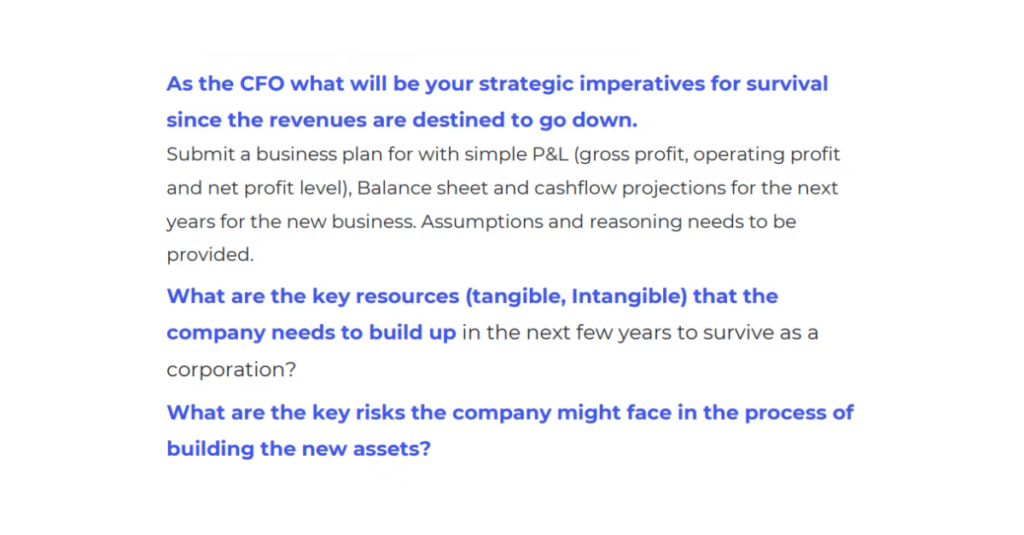
The sole purpose of financial models is to solve business problems. They help curate a data-led solution that is plausible and seems reasonable with 'bounded rationality' (i.e. with the available information at hand at that point in time).
The solution is my POV of this situation and there is no perfect way to circumvent it - I have substantiated the approach through some growth frameworks like the BCG matrix and Ansoff-growth matrix, which you can use in many different situations.
Step 1: Priority of the CEO / CFO should be damage control and diversification. How?
a) Brand reputational management by allaying consumer concerns: Recall the inventory lying with trading-channel partners; Destroy the recalled inventory and communicate the same to increase trust and transparency in Brand.
b) Build a balanced portfolio of products to reduce dependence on any single product category: Leverage core competence (consumer intelligence) & competitive advantage (distribution network) for product development; Analyze consumer trends to expand with economies of scope with new adjacent product categories.
Ultimately, use the Ansoff matrix (google about the matrix to dig deeper) to map decisions risk-intensity with possible avenues of growth (i.e. new product development along with market development).
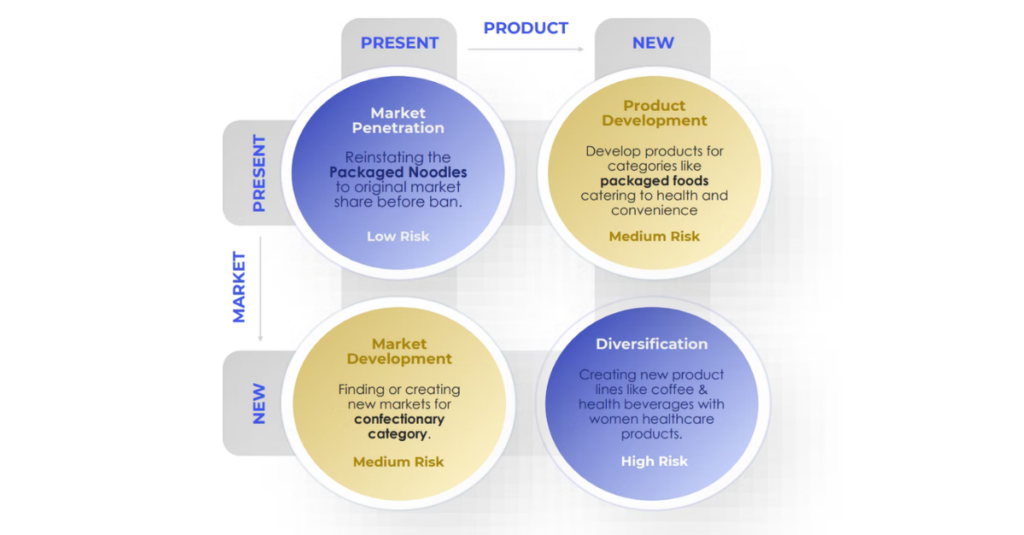
Step 2: Segregate levers of growth from vectors that create friction against growth to diversify product mix in the long run. This will help to diversify the negative spill-over impact of any specific brand on overall revenue. Determine a target product mix as stated below:
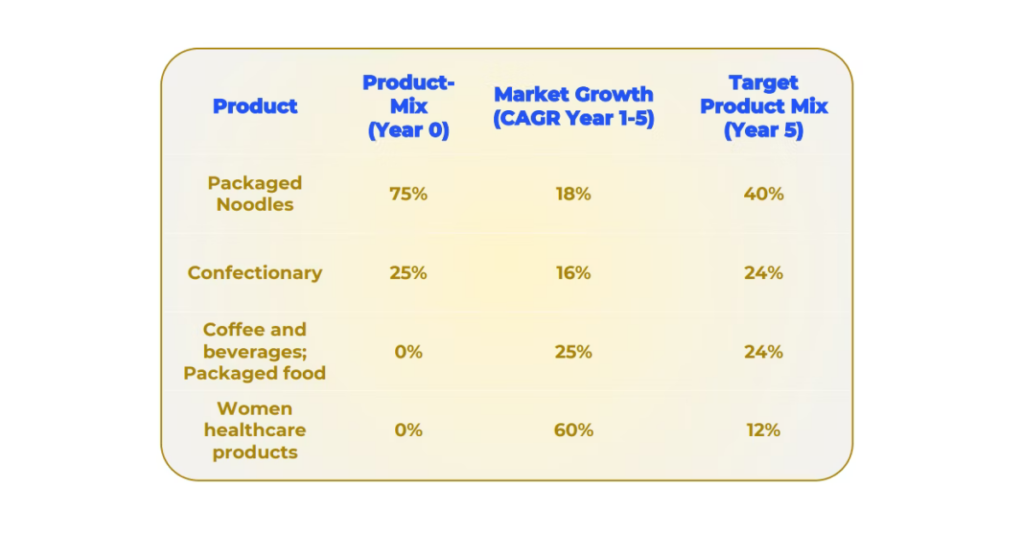
How? Use BCG-matrix to assess the relative market share of each product category against relative market growth opportunity.
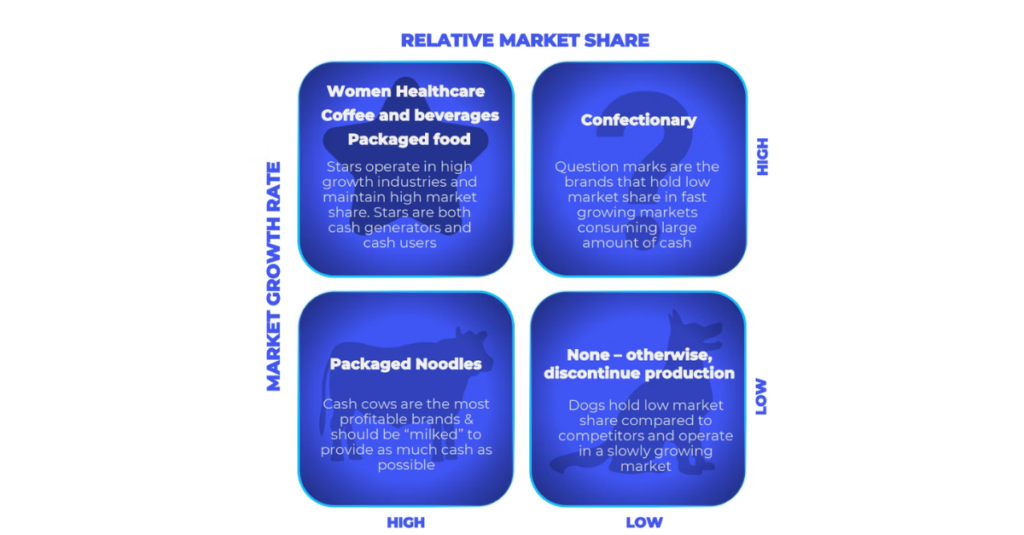
Now, build several growth scenarios with assumptions related to decisions taken for building resilience in the future and risks to be confronted. The idea is to develop a playbook for availing the options available at your disposal in different scenarios and the corresponding resources required at that instance.
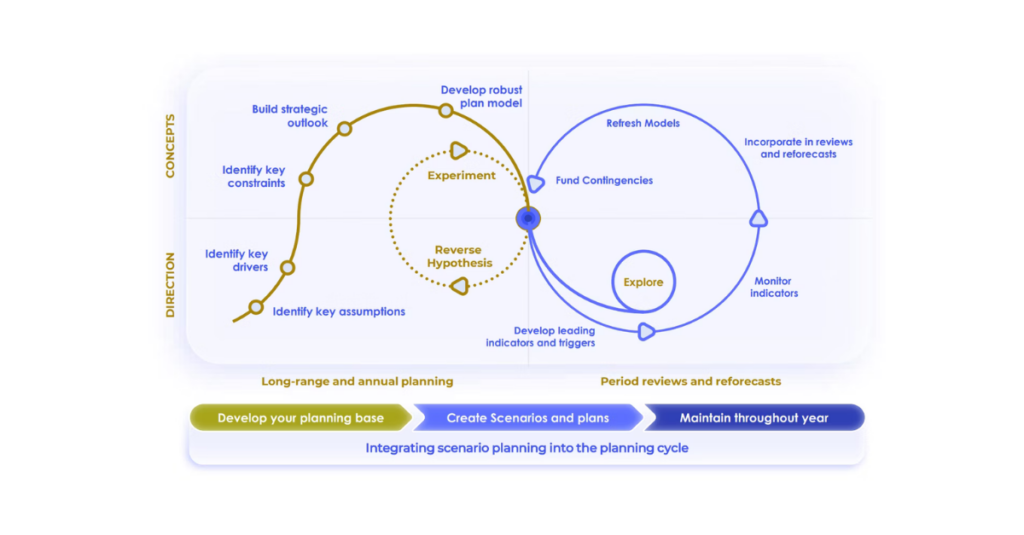
Different scenarios are built with the following considerations:
1) Base case: Investments into new product development at Year 1 will reap returns at a moderate rate from Year 2 onwards.
2) Best / Optimistic case: This scenario is so good that you would bet all your money on it. It helps build and prepare for operational scalability in case it comes true.
3) Worst / Conservative case: This one is so incriminating that it threatens bankruptcy. For example, a merger of two big competitors in a consolidating industry.
Using the techniques postulated by FMI for building different scenarios using IF, and CHOOSE functions have been used for different growth assumptions. A full financial model detailing each scenario with specific commentary is attached below:
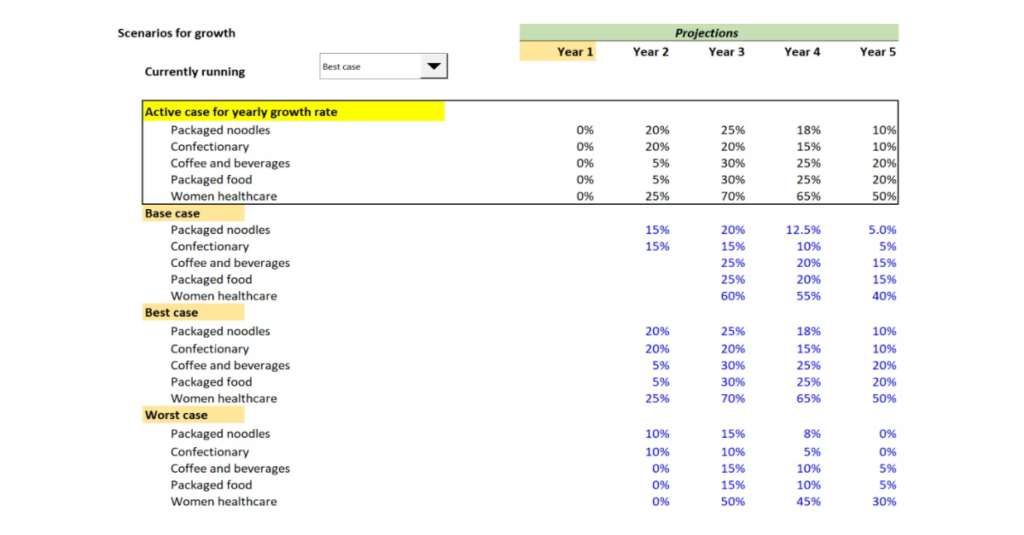
Further, two questions raised at the inception remain unanswered.
1) What are the Key resources that need to be built for survival?
I have divided it into two parts - one, resources required for building internal core resilience, and second, for building external core intelligence.
A) For building internal core resilience:
i) Build a financial war chest for contingency: Maintaining adequate financial resources is crucial for both survival and diversification. Prioritize building cash reserves to weather uncertainties and invest in growth initiatives.
ii) Research and Development Capabilities: Allocating resources for R&D activities and fostering a culture of innovation – will help develop new products, enhance existing offerings, and adapt to evolving customer needs.
iii) Regulatory and Compliance Capabilities: It is essential for navigating changing regulatory environments. This mitigates legal and reputational risks and facilitates market entry into new regions or product categories.
B) For building external intelligence:
i) Market Intelligence and Customer Insights: Understanding market dynamics and identifying emerging trends enables informed decision-making and the development of customer-centric strategies for survival and diversification.
ii) Brand and Reputation: Invest in brand-building activities to enhance brand equity, credibility, and customer trust. This facilitates market acceptance of new products aiding diversification strategy.
iii) Strategic Partnerships and Alliances: Collaborating with strategic partners can provide access to resources, expertise, and market reach. Such collaborations can unlock synergies, shared resources & growth opportunities.
Though, we laid out a straightforward strategy assessing all the vital factors for growth - let us now chart out all the possible risks that the company may confront on its way. Risks are grouped into the following categories prioritizing the most important ones:
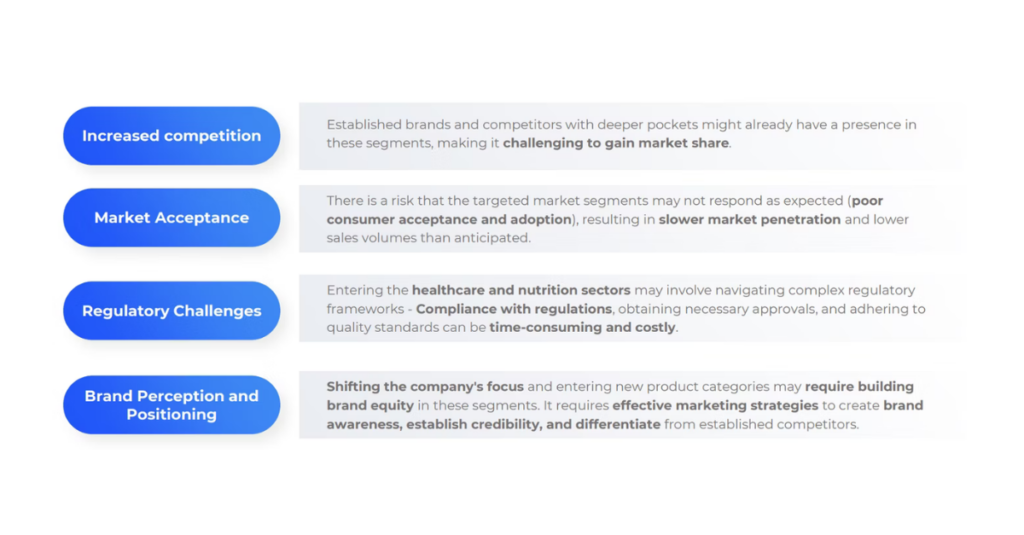
Hope you enjoyed the case study. Usually, these kinds of case studies are shared with prospective candidates looking to get into roles related to strategy, business finance, financial planning, and analysis, or management consultancy.
Having a thorough knowledge of scenario planning and financial modeling is a key differentiator for converting the interviews. You can find the full financial model attached here.
Let me know what would have been your approach if you were the CEO / CFO of this company in the comments section.